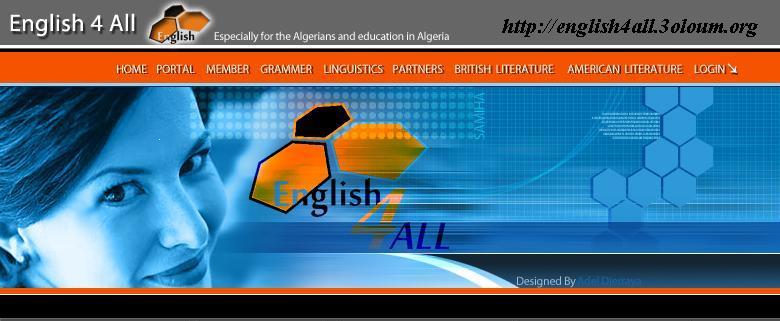Samiha
Admin

عدد المساهمات : 159
تاريخ التسجيل : 2010-01-23
العمر : 39
الموقع : https://english4all.forumarabia.com/
 |  Subject: Chapter 2: Orthography Subject: Chapter 2: Orthography  Sat Feb 13, 2010 1:03 am Sat Feb 13, 2010 1:03 am | |
|
Chapter 2:
Orthography
A few of the letters in Old English texts may be unfamiliar to you.
þ and Þ (thorn): In Modern English we represent the sounds at the beginning of the word "the" and end of the word "with" with the digraph "th" (digraph is a term meaning two letters used to represent one sound). Old English had two separate letters for the "th" sound. The first is written like this: þ . It is called thorn.
ð and Ð (eth): Old English scribes could also represent the "th" sound with the letter ð (the capital letter version looks like a capital D with a short horizontal line : Ð). The letter is called "eth," pronounced so that it rhymes with the first syllable in the word "feather."
Thorn and eth are used interchangeably to represent both voiced and unvoiced "th" sounds (the sound at the beginning of "thud" is voiced; the sound at the end of "with" is unvoiced).
Æ and æ (ash): This letter, called "ash," may be familiar to you from old-fashioned spellings of words like "Encyclopædia." The digraph æ in Old English is pronounced the same way as the "a" in the words "bat" or "cat."
Below you will find some Modern English words with the "th" sound replaced by "eth" or "thorn" and some of the "a" sounds replaced with "ash."
Ðat = that
ðousand = thousand
sixþ = sixth
þin = thin
wiðer = wither
bæckground = background
Æppetite= Appetite
æt = Æt
hæmmer = hammer
Æcknowledge = Æcknowledge
Note:
In addition to thorn, eth, and ash, there were a few additional manuscript letters used in Old English that are unfamiliar to Modern English speakers. The letter Ȝ, called yogh, is pronounced like Modern English "y" or "g" depending upon the word in which it is found. Yogh (the name is pronounced so that it rhymes with the Scottish word "loch") is the antecedent of modern English "yoke").
A letter which looks like Modern English "p," called "wynn" (which comes from a rune by that name) is pronounced like Modern English "w."
Although yogh and wynn are found in Old English manuscripts, modern editors replace them with their Modern English equivalents, while they leave thorn,eth, and ash in place. The reasons for this inconsistency are bound up in the early history of Anglo-Saxon studies and the preferences of the editors who made the first print editions . If you decide to learn about paleography, the study of ancient writing, or work directly with Anglo-Saxon manuscripts or facsimiles, you will have to learn to recognize "yogh," "wynn" and also special forms of the letters "s," "r," and "f." We give a brief guide in the Appendix on Manuscripts. But most Old English texts are edited so that the only unfamiliar letters printed are thorn, eth, and ash (þ, ð æ).
| |
|



